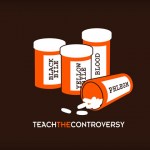pain management
Many are the bizarre, dubious, and downright crappy acupuncture studies that I’ve deconstructed over the years. Just type “acupuncture” into the search box of this blog, and you’ll soon see. (If that pulls up too many results, try typing “acupuncture” and “study” or “acupuncture” and “clinical trial” in the search box.) I’m not the only one, either. For instance, my good bud Mark Crislip did his usual excellent and highly sarcastic job of deconstructing the frequent claim by acupuncture apologists that acupuncture “works” by releasing endorphins. So when I first saw an even more bizarre…
This is a bonus addition to a series exploring the intersections between effectively caring for people living with chronic pain and the rise in unintentional poisoning deaths due to prescription painkillers. To read the three-part series, which explores the science of pain management as well as physicians' and public health workers' roles in preventing opioid abuse and overdose, click here, here and here.
by Kim Krisberg
"If you really look at how pain affects people and what it means to have pain...you start to view it more as a social phenomenon."
These are words from Dr. Daniel Carr, a…
This is the last in a series exploring the intersections between effectively caring for people living with chronic pain and the rise in unintentional poisoning deaths due to prescription painkillers. This week's story looks at the role of public health in curbing the opioid abuse and overdose problem. Read the previous stories in the series here and here. (We'll be publishing a bonus addition to the series next week — a discussion with Dr. Daniel Carr, director of the Pain Research, Education and Policy Program at Tufts University.)
by Kim Krisberg
A decade ago, only about 10 percent of the…
